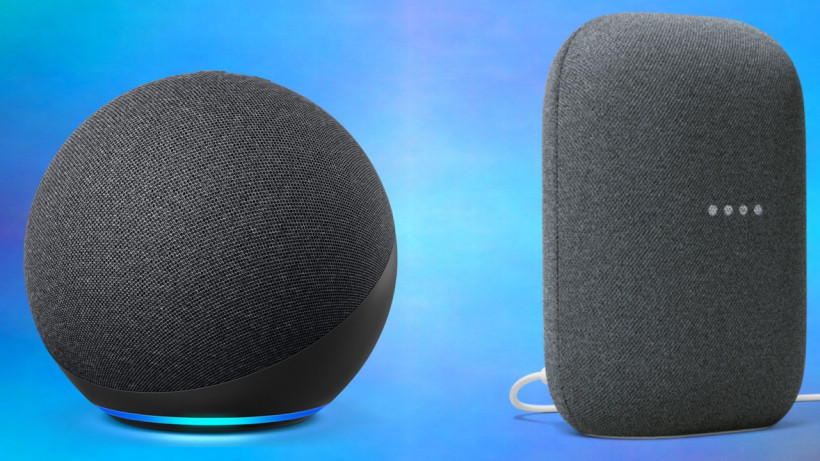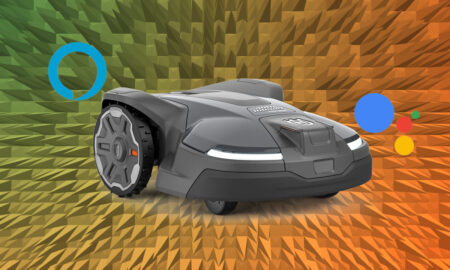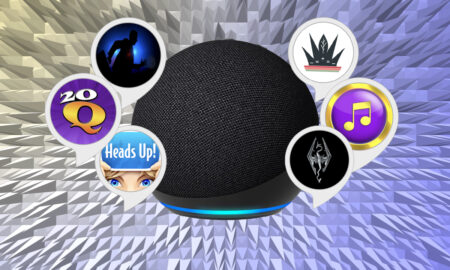The sub-$100 digital assistant speakers compared and contrasted
Smart speakers have blossomed and become more and more accessible to the masses. Today, you can get an awesome sub-$100 smart speaker that doesn’t compromise on features or quality from a range of technology manufacturers.
Two of the major players in this market, Amazon and Google, offer a myriad of smart speakers that cater to all user needs and budgets.
Over the past few months, Amazon and Google have introduced new, affordable, models to their smart speaker ranges. Priced at just £89, Amazon’s 4th-gen Echo and Google’s Nest Audio prove that a great smart speaker doesn’t need to break the bank.
But out of the two, Nest Audio or Amazon Echo, which is the best speaker? And, ultimately, which should you buy?
In this article, we’ll answer those questions by comparing these speakers on design, features, sound quality, and pricing.
Our full verdicts: Nest Audio review | Amazon Echo 4 review
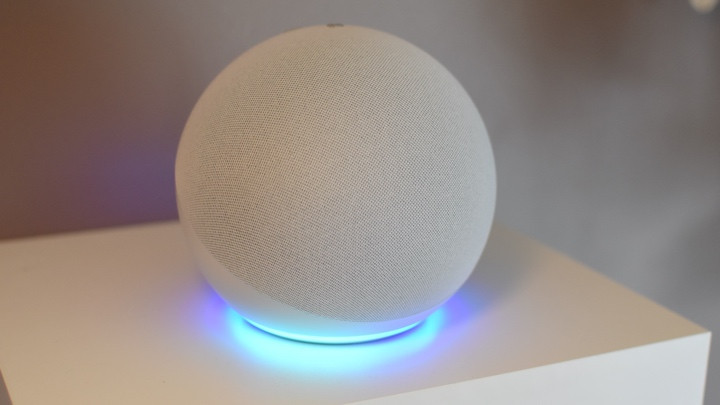
Amazon Echo 4th-gen vs Nest Audio: Design and build
Amazon has swapped the tall, cylinder shape of its older smart speakers for a brand new globe-like design with the fourth-generation Echo.
In terms of size, it’s about as big as a honeydew melon and is a little bit smaller than its predecessor.
While the 2020 Echo sports an entirely new design, it keeps the classic fabric exterior that we saw on the last two ‘standard’ Echo smart speakers.
However, there’s no longer a plastic top; this is now at the back of the speaker, taking the form of a semi-circular bottom. The Echo 4 comes in three colors: Glacier White, Charcoal, and Twilight Blue.
At the top of the speaker, you’ll find four physical buttons that allow users to increase/decrease the volume, mute audio, as well as perform actions like waking up Alexa, resetting the Echo, and turning off alarms.
Echo’s famous LED ring is now located at the bottom of the speaker, and the Alexa color lights are the same: blue when Alexa is processing commands, red when it’s muted, and so on.
The power cable is now completely white, and the plug is smaller. The connection port hasn’t changed at all, and there’s still a 3.5mm in/out jack.
The Nest Audio looks pretty similar to the Google Home Max, except it’s a lot smaller and can only be positioned upright. Its dimensions are 175 x 124 x 78mm, while the fourth-generation Echo comes in at 100 x 100 x 89mm. Out of the two, the Nest Audio is the tallest smart speaker.
It sports a minimalist design, so won’t stick out like a sore thumb in your home. Unlike the bright blue color of Echo’s LED ring, this speaker only has a line of white dots that indicate when Google Assistant is thinking.
Similar to the Echo 4, it is wrapped up cozily in a mesh fabric. You can get the Nest Audio in a lot more color choices than Amazon’s latest smart speaker: Sky (blue), Sand (pink), Chalk (white), Charcoal (black), and Sage (green).
When you look at the front of the speaker, you can’t notice any buttons or lights. But when you ask the Google Assistant to perform an action, the LED dots will suddenly light up.
They also appear when you change the volume with the invisible touch capacitive buttons located on the speaker’s top right and left corners.
If you want to pause or resume a song, just tap between these. Or press and hold them down should you wish to reset the speaker.
The speaker’s only physical button lets you turn the microphone on or off, and this is located at the back of the speaker. Here, you’ll also find the power adapter. But unlike the Echo 4, there isn’t a 3.5mm audio jack, which is a little annoying.

Echo 4 vs Google Nest Audio: Smart features
For any Amazon smart speaker, the star of the show is its voice assistant: Alexa. With the fourth-generation Echo, Alexa has been significantly improved thanks to the new AZ1 Neural Edge processor.
According to Amazon, it is “an all-new silicon module that’s purpose-built for accelerating machine learning applications.”
In other words, Alexa is faster than it’s ever been. Thanks to this new processor, Amazon’s voice assistant can perform requests locally, making it so much quicker to respond to voice requests.
Whether you want to ask Alexa to set a timer, play a specific song, update your calendar, or play a game, you’ll get an answer within milliseconds.
The Echo 4 comes with a range of new abilities, such as natural Turn-Taking, Kids Mode, Care Hub, Guard Plus, and more.
Alexa will also understand your voice better than before, and if it’s struggling to perform a task, it’ll question you on what you mean. The speaker will use this information to set up a Routine so that it doesn’t have issues performing the same command again.
Another new feature is that the Echo 4 can act as a bridge for the Sidewalk network, enabling users to connect Ring lighting products and other select products with ease.
You don’t need to spend more money on a dedicated bridge to get these devices to work with the smart speaker.
At the same time, you don’t need a dedicated bridge for connecting Zigbee devices as the Echo 4th-gen doubles up as a smart home hub. These include smart light bulbs, motion and contact sensors, door locks, smart plugs, and more.
The Nest Audio is pretty similar to other Google Home smart speakers where voice capabilities are concerned, providing you with the ability to ask questions, set timers, update your calendar, and add things to your shopping list.
Thanks to a feature called Voice Match, it will also understand individual voices in order to personalize results. You can also make voice calls via Google Duo, ring your Nest Audio via the app, and set up an intercom/broadcast system across different Google smart speakers.
Like the Echo 4, the Nest Audio is also an incredible smart home hub – albeit with no Zigbee smarts. It can control different connected objects in a matter of seconds and remember the commands you tend to ask the most thanks to a built-in machine learning chip.
With the Nest Audio, you can also create a Google multi-room music system by connecting different smart speakers. Likewise, the Echo can form part of an Alexa-based multi-room audio setup.
The Nest Audio allows you to stream music, radio, and podcasts from Google streaming services, Spotify, Pandora, and SiriusXM. But sadly, it doesn’t support Apple Music or Amazon Music. Amazon’s Echo 4, on the other hand, does support both of these.

Echo 4 vs Nest Audio: Sound quality
Ultimately, if you’re buying a speaker, you’ll want great sound quality. For a £89 speaker, the fourth-generation Echo provides excellent audio thanks to a 3-inch woofer and two 0.8-inch tweeters.
With this high-tech audio setup, Echo 4 delivers stereo sound. And the best thing is that you don’t need to link up another speaker to enjoy this, but you can do so if you’d’ like. What makes the sound quality sound even better is Dolby processing.
The new Echo can also analyze background acoustics and improve sound quality accordingly. When we tested this feature in a big living room and a small bedroom, the results were impressive. We also compared the fourth-generation Echo to an Echo Plus, with the former providing better vocals and sound overall.
We did, however, notice that bass was better on the Echo Plus. But for most people, this won’t matter. Whatever the case, you can easily connect your Echo to a high-end sound system using the 3.5mm audio in/out connection.
Just like the Echo 4, the Nest Audio is designed to provide a great sound experience at an affordable price point. It’s kitted out with a 3-inch woofer and a 0.8-inch tweeter, which provide impressive sound across the board.
Noticeably, the Echo 4 has two forward-facing tweeters while the Nest Audio has just the one. And while Amazon’s latest smart speaker automatically analyzes surrounding acoustics in order to improve audio playback, the Nest Audio relies on a data-driven model to function in over 2,500 simulated placements.
Compared to the new Echo, Nest Audio provides better clarity and vocals. But the Echo 4 has louder playback and greater bass.
Out of the two, we’d say the Nest Audio sounds cleaner and crisper. In reality, choosing which has the best sound quality is subjective and will come down to personal preference.
However, what’s certain is that you can get a great-sounding speaker for less than £100.
Echo 4 vs Nest Audio: Price
So, how much cash will you need to shell out for either speaker?
Amazon’s latest smart speaker retails at £89 and the Nest Audio costs £89 too.
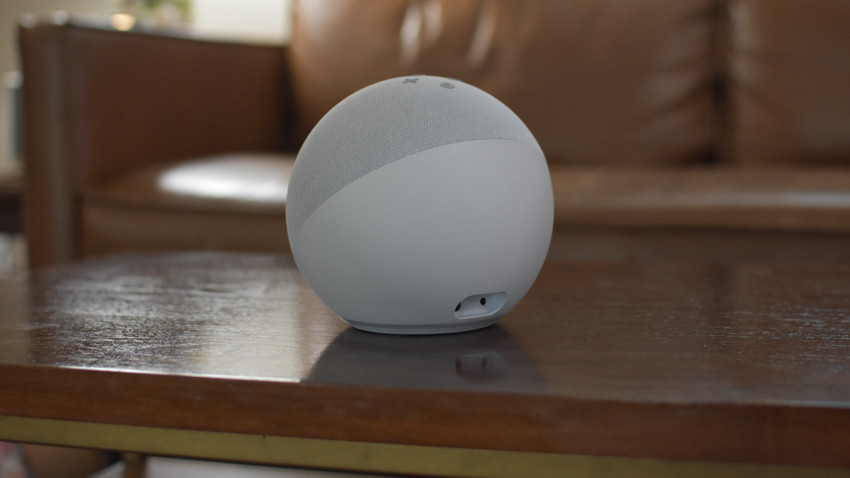
Nest Audio vs Amazon Echo 4th-generation: Which is the best?
Amazon has knocked it out of the park with its latest Echo smart speaker. It has a new, sleek design that will look great in any modern home, and provides impeccable stereo sound. We also love that the Echo 4 is very easy to set up, supports Zigbee and Sidewalk radios, and has a new tap-to-snooze feature.
In comparison, Google’s Nest Audio is another excellent smart speaker. You get great sound, a simplistic design, a responsive voice assistant, and lots of other great features. What else could you want?
Packed with more audio tech, the Echo 4 is probably the better speaker out of the two. But to be honest, you won’t be disappointed with either speaker.
For most people, the decision will come down to whether they prefer Alexa or Google Assistant. These voice assistants are at the heart of each speaker.


